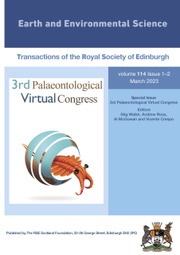No CrossRef data available.
Article contents
VII.—Rupture Stresses in Beams and Crane Hooks.
Published online by Cambridge University Press: 06 July 2012
Conclusions
1. It may be taken as conclusive that the final distribution of stress at rupture point in a member subjected to an external bending moment is a rectangular one, unless where the cohesion of adjacent layers is not sufficient to withstand the shear induced by the resisting moment of the section.
2. That, provided shear does not take place, the neutral axis moves always to the position which reduces the summation of the tensile and compressive stress areas, across a section, to the equilibrant of the external forces. (In the case of a beam this reduces to zero; in that of a hook, at the principal section to the suspended weight.)
3. That the total resisting moment of these stresses must be equal to the external bending moment as measured to the neutral axis at rupture point, but that these balancing moments do not differ materially from those measured to an axis obtained by dividing the sectional area into tensile and compressive stress areas which are in inverse proportion to the magnitude of their respective ultimate direct stresses.
The advantage of these formulæ are important. It is possible to indicate with certainty the magnitude of the load which will cause rupture in a beam or a hook provided there is known the point of application or the effective arm of the load, the cross-section of the beam or hook, and the breaking strengths of the material when subjected to the different forms of direct loading.
- Type
- Research Article
- Information
- Earth and Environmental Science Transactions of The Royal Society of Edinburgh , Volume 50 , Issue 1 , 1914 , pp. 211 - 223
- Copyright
- Copyright © Royal Society of Edinburgh 1914
References
page 211 note * Trans. R.S.E., vol. xlviii., 1912, pp. 417–440.
page 217 note * Drapers' Co. Research Memoirs, Technical Series I., London, 1904.
page 221 note * See Goodman, on the “Strength of Drop-forged Crane Hooks,” Engineering, lxxii, p. 537Google Scholar.
page 221 note † Goodman, on “Maximum Stresses in Crane Hooks,” Minutes of Proc. of Inst. of Civil Engineers, vol. clxvii. p. 296Google Scholar.


